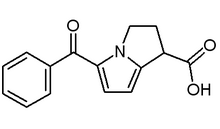TO THE EDITOR: I enjoyed the article on the care of patients who are recovering from chemical dependency in the November 15, 2003, issue of American Family Physician. (1) This important issue has received little attention in the general medical literature. The article provides an excellent overview of the special factors one should consider when treating recovering persons. Many well-meaning physicians, unaware of these considerations, have unknowingly pushed a recovering person toward relapse by prescribing an avoidable mood-altering medication. The consequences of relapse are often grave, including destroyed relationships, incarceration, and death. Understanding these issues and following the suggestions outlined by the authors can help physicians play an important role in preventing relapses.
In addition to the authors' excellent suggestions about the management of cough in people recovering from chemical dependency, the use of albuterol inhalers should be considered. Albuterol inhalers are not mood altering, and they effectively control cough associated with bronchitis. (2) In my experience, albuterol is even more effective for cough in recovering patients than it is in the general population. This is not surprising, because most recovering patients have smoking histories, and many have inhaled a wide variety of potential lung toxins (such as marijuana, cocaine, and toxins from homemade pipes made from aluminum cans).
The authors (1) discuss acute pain management, but the topic of postoperative pain deserves additional attention. Following many surgical procedures, patients have no choice but to use medications that have the highest potential for triggering relapse. Recovering patients generally feel trapped between accepting the use of these substances they have worked hard to avoid or suffering unnecessarily. Physicians should reassure the patient that many thousands of persons recovering from chemical dependence have undergone major surgery and remained in recovery. The patient should be encouraged to be as active as possible in recovery efforts during the perioperative period (e.g., attending 12-step meetings, meditating).
Following surgery, adequate pain relief should be provided; however, it is important not to overshoot the necessary dose because this will lead to avoidable euphoria. The physician should be attentive for objective signs of uncontrolled pain (such as vital-sign changes, apprehension, difficulty moving) and unnecessarily high doses (such as the patient nodding out during conversation or being difficult to arouse). The patient may require substantially higher doses of medication than usual, and, especially in the early recovery period, may have a very high tolerance. Because of cross-tolerance, this high tolerance may extend to substances the patient never abused.
In my experience, parenteral ketorolac (Toradol) is an effective adjunct that provides adequate relief while using much lower doses of opiates. On discharge, ongoing adequate pain relief should be provided, but the patient should be switched to non-mood-altering medications as soon as possible. Patients should be instructed to adhere precisely to the scheduled dosing of mood-altering drugs and may have someone else keep the bottle and administer the medication. If the dosage is insufficient, the patient should contact the physician to discuss increasing the dose and/or frequency. Following these suggestions can help keep patients on course with their recovery following surgery and allay many of their concerns
REFERENCES
(1. Jones EM, Knutson D, Haines D. Common problems in patients recovering from chemical dependency. Am Fam Physician 2003;68:1971-8.
(2.) Gonzales R, Sande MA. Uncomplicated acute bronchitis. Ann Intern Med 2000;133:981-91.
EDITOR'S NOTE: This letter was sent to the authors of "Common Problems in Patients Recovering from Chemical Dependency," who declined to reply.
ROBERT L. HATCH, M.D.
University of Florida College of Medicine
Dept. of Community Health and Family Medicine
1600 S.W. Archer Rd. Room
G1-019 Gainsville, FL 32610
COPYRIGHT 2004 American Academy of Family Physicians
COPYRIGHT 2004 Gale Group



